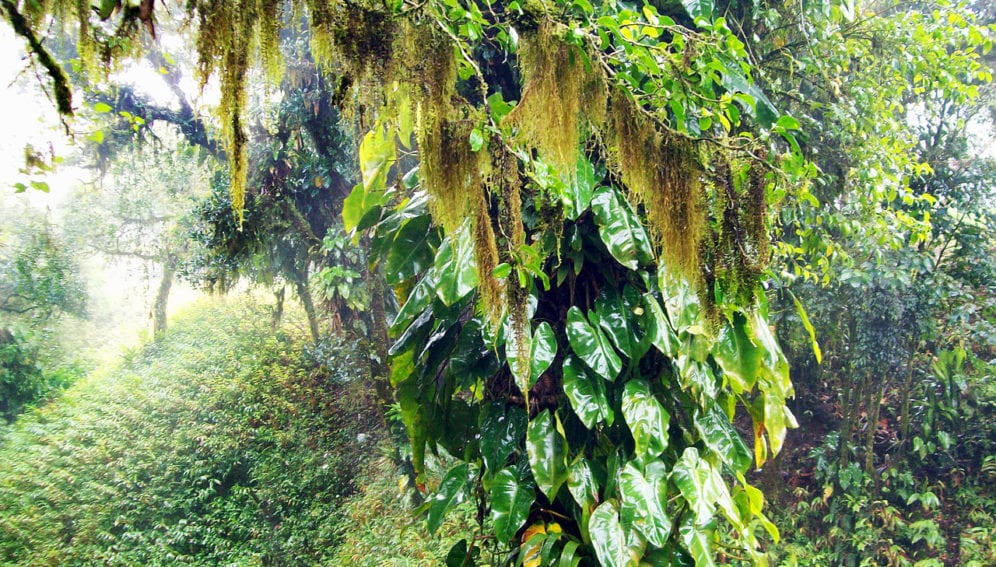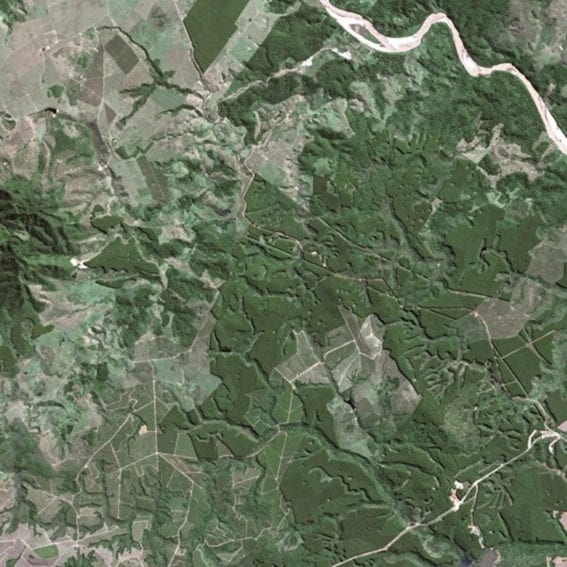04/01/21
Degradation of Brazil’s Atlantic Forest laid bare

Send to a friend
The details you provide on this page will not be used to send unsolicited email, and will not be sold to a 3rd party. See privacy policy.
The alarming rate of felling of the world’s tropical forests and resulting biodiversity loss is well documented. But much less is known about the forest fragments left behind when deforestation has occurred.
Now, a study of the Atlantic Forest, an ecosystem rich with endemic species of plants and animals and home to about a third of the South American population, seeks to shed light on the state of these remaining forest areas.
More accessible to humans, these fragments are vulnerable to wildfires, logging, hunting and biological invasions, says the study published in Nature Communications.
“It should be noted that the Atlantic Forest has an endemic level equal to or greater than that of the Amazon, but little is said about its richness in biodiversity,”
Marcos Pedlowski, State University of North Fluminense, Rio de Janeiro
The Atlantic Forest once covered the entire length of Brazil’s coastline as well as parts of Argentina, Paraguay and Uruguay. Today, it survives only in bits.
Human impacts on these forest remnants have already caused the loss of up to 42 per cent of the variety of species found in the forest as well as a major loss of carbon stocks, essential elements for the conservation of life and climate regulation, the study found.
The Atlantic Forest contains a huge variety of tree types and unique vegetation, including the pau brasil, the national tree of Brazil, which gave the country its name.
Researchers analysed 1,819 surveys, which considered the climate, soil, level of forest degradation and size of the remaining forest. They determined that, on average, the forest fragments have a 25-32 per cent lower biomass (roots, trunk, leaves and branches); 23-31 per cent fewer species, and 33 per cent fewer endemic species.
This is equivalent to the loss of up to 70,000 square kilometres of forests or as much as US$2.6 billion in carbon credits, the study concluded.
Lead author Renato Lima, a researcher at the Institute of Biosciences of the University of São Paulo, says these figures have direct implications for climate change mitigation, an important element of which is fighting forest degradation.
But, the researchers say that “quantifying the impacts of forest degradation is hard and has therefore received less attention than deforestation in the climate change and conservation agendas, such as the Paris Agreement”.
Degradation occurs when the accumulation of disturbances inside the forest — such as burning, logging and proliferation of invasive species — changes the entire ecosystem and the functioning of the forest, affecting its ability to store carbon and water, and harming biodiversity.
Scientists warn that the fate of tropical forests depends not only on promoting the reforestation of deforested lands but also on mitigating forest degradation in the remaining forest fragments.
Projections by the Joint Research Center — the European Commission’s science and knowledge service — suggest that if the current rates of disturbances continue, pristine tropical forests will be wiped out by 2050.
According to these projections, some of Sub-Saharan Africa’s untouched forests will disappear between 2024 and 2090; 2034 may be the year of the disappearance of those located in Thailand or Vietnam; by 2040, they will be gone from Madagascar and India, and by 2129 from Brazil’s Amazon.



This map by the EU’s Joint Research Centre shows the forecasted year of the disappearance of forests across the globe, based on disturbances observed during the last decade.
Looking ahead to the upcoming COP15 — the UN Convention on Biological Diversity meeting tentatively planned for May 2021 in Kunming, China — researchers from 12 countries mapped 2.9 billion hectares of different types of degraded ecosystems and divided them on a scale from highest to lowest priority.
On this scale, the Atlantic Forest is among the areas of highest global priority while, in a separate study, it appears in the top ten per cent of conservation “hotspots” needing restoration.
For Marcos Pedlowski, a geographer at the State University of North Fluminense, Rio de Janeiro, who did not take part in the study, believes the study’s focus on the Atlantic Forest is important.
“Most recent efforts take into account the deforestation of the Amazon, disregarding all other biomes and the problem of degradation. It should be noted that the Atlantic Forest has an endemic level equal to or greater than that of the Amazon, but little is said about its richness in biodiversity,” he said.



In this aerial view of the Atlantic Forest deforestation is visible, but measuring it is much more difficult. Image credit: Cnes – Spot Image/Wikimedia Commons (Creative Commons 3.0).
The geographer, whose recent study draws attention to the rate of degradation in the Amazon, adds that the less disturbed the fragment, the more environmental services it can offer.
“In addition to being a diverse ecosystem, the Atlantic Forest is located around the largest urban concentrations in Brazil, and water is an important element for these urban centres. We’ve been going through serious water crises, while water generation is one of the environmental services that preserved forests can offer,” Pedlowski added.
According to the study, fighting forest degradation in what remains of the Atlantic Forest can attract billions of dollars in investments related to carbon credits.
Lima adds that since most fragments are located on private property, creating attractive alternatives for landowners is essential.
“Forest restoration has its costs, but it can bring profits in the carbon credits market. Policymaking could be the key to attracting funds to the Atlantic Forest,” he added.
In Brazil, funds to reduce carbon emissions from deforestation and forest degradation are mainly concentrated on the Amazon, and currently only the State of Rio de Janeiro has a fund for the Atlantic Forest.
The study is supported by FAPESP, a SciDev.Net donor
This article was produced by SciDev.Net’s Latin America & Caribbean desk and edited for clarity.















